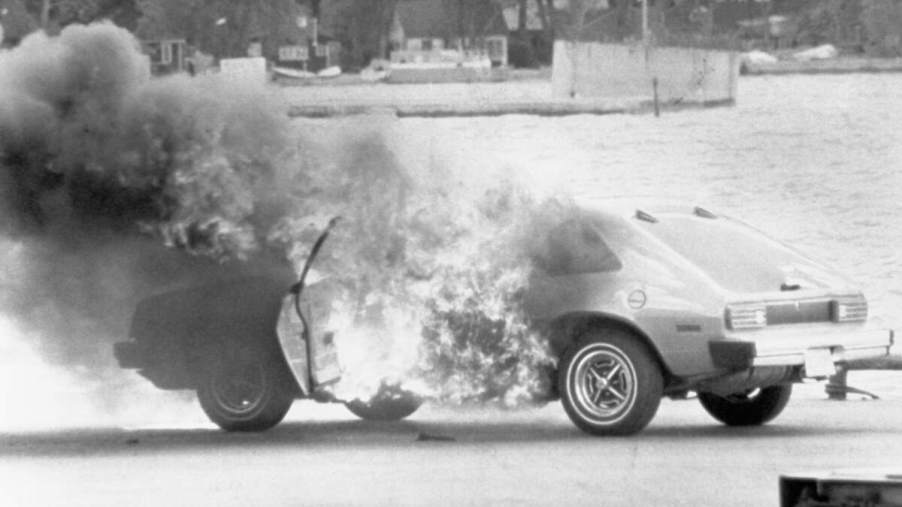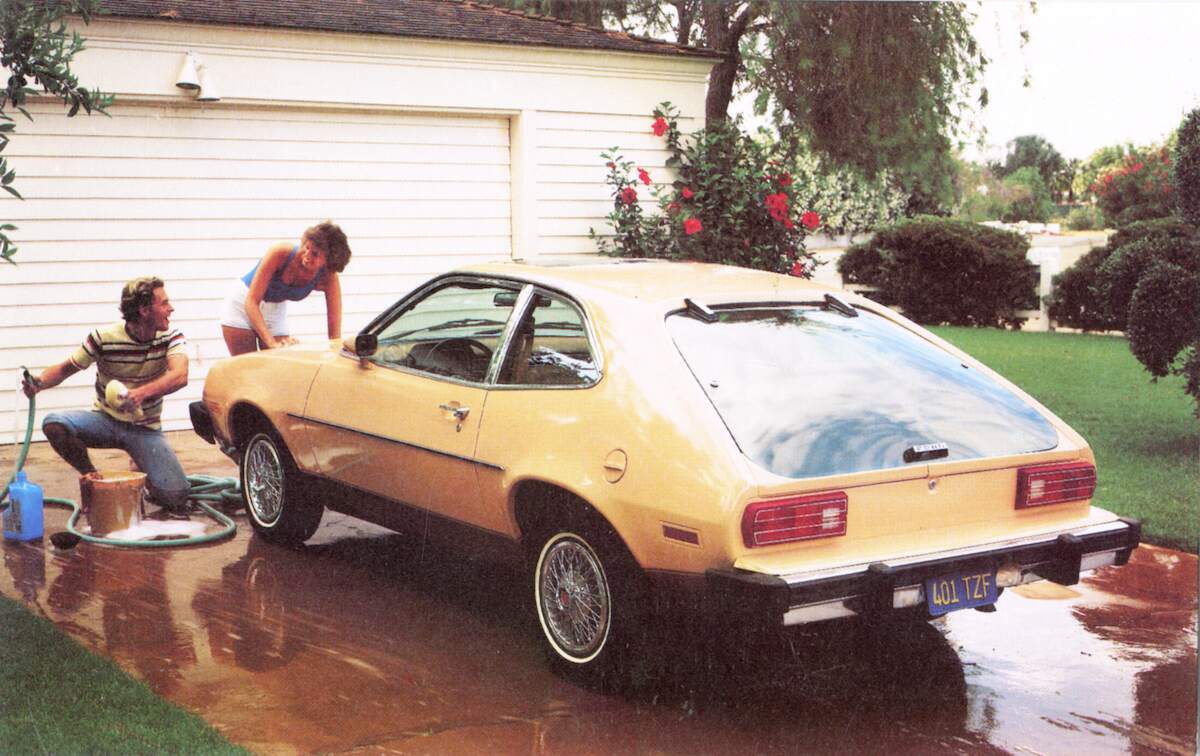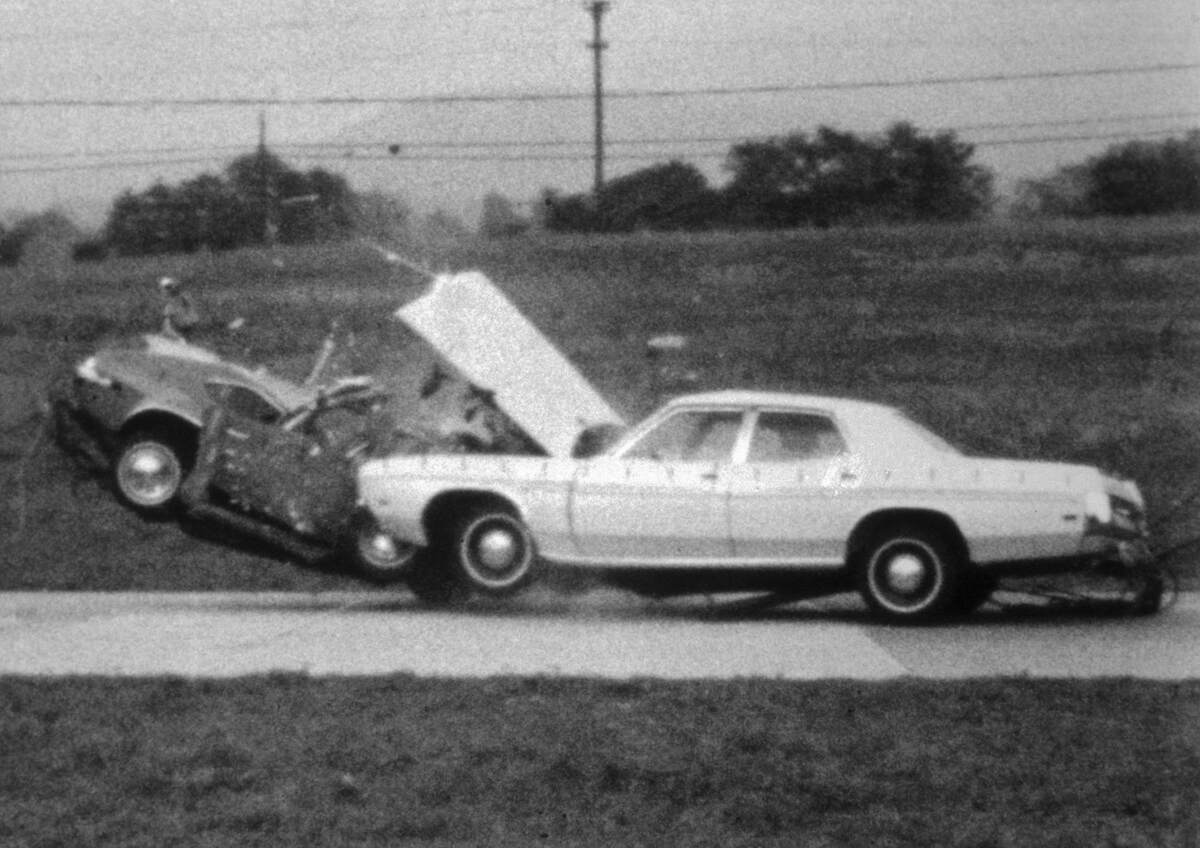
A $5 Part Could Have Prevented the Ford Pinto Car Fires That Killed Dozens
The Ford Pinto was popular with the public thanks to its entry price of $1,800. This subcompact car sold 352,402 units during its 1971 debut and reached a high of 544,209 in 1974. However, Ford killed the Pinto after a dramatic controversy. The disturbing details include how a $5 part could have prevented the infamous Ford Pinto car fires that killed dozens.
The Ford Pinto’s poor design foreshadowed big trouble for the little car

Ford introduced the Pinto subcompact car in 1970 for the 1971 model year, following the Mustang, Bronco, and Maverick. Under the supervision of Ford’s then-president, Lee Iacocca, engineers conceived the Pinto as the Blue Oval’s smallest vehicle. Iacocca demanded a 1971 model that weighed less than 2,000 pounds and cost under $2,000.
The Pinto, informally known as “Lee’s car,” took only 25 months from conception to delivery — the industry average was 43 months. And its production of 3 million vehicles in 10 years greatly outpaced American rivals like the Chevy Vega and AMC Gremlin.
During production, the Pinto went through a battery of crash tests. The results weren’t great. Fuel leaks plagued the car. However, Ford continued with the design to save time and costs until new National Highway Traffic Safety Administration (NHTSA) standards were introduced in 1977.
To maximize interior space in the subcompact car, designers placed the Pinto’s steel fuel tank below the back axle and in front of the bumper. That position made the tank vulnerable to rear-impact gasoline leaks and burns.
Bad press heralded the Ford Pinto’s demise

The car’s sales and reception remained strong despite an explosive 1972 accident involving a Pinto whose driver was killed. Its 13-year-old passenger sustained third-degree burns over 90% of his body in the fire, caused when another car struck the Pinto from behind at an estimated 30 mph.
However, when the accident case went to trial, an October 1997 Mother Jones report called the Pinto a “firetrap” and a “lethal car.” It also cited 500 to 900 deadly Pinto fires due to the gas tank exploding from rear-end collisions.
The article contended Ford knew about the safety concerns but chose not to correct them to keep Pinto production costs down. Mother Jones claimed to have documentation of a memo Ford produced of a cost analysis to solve the issue. According to the memo, the part to fix the problem — a rubber bladder — would have cost $5.
Ford Motor Company conducted a rear-end crash test on a car with a rubber bladder in the gas tank. The tank ruptured, but no fuel leaked. The total purchase and installation cost of the bladder would have been $5.08 per car. However, company accountants calculated the cost of retooling Pinto assembly lines and equipping each car with a safety gadget like the $5 Goodyear bladder was greater than that of paying out millions of dollars to crash survivors.
After the reports surfaced, Pinto sales tanked. Ford ceased the car’s production in 1980 and replaced it with the Escort.
Lee Iacocca had better luck with other models
The Ford Pinto came from Lee Iacocca’s ambition to create a vehicle that could be produced quickly and cheaply. Although the cute but tragically flawed car went up in flames, a few of Iacocca’s other creations made him an auto industry superstar.
For example, the Ford Mustang remains one of Iacocca’s enduring legacies. He also conceived the Dodge Caravan, ushering in the age of the modern minivan, after he moved to Chrysler.




